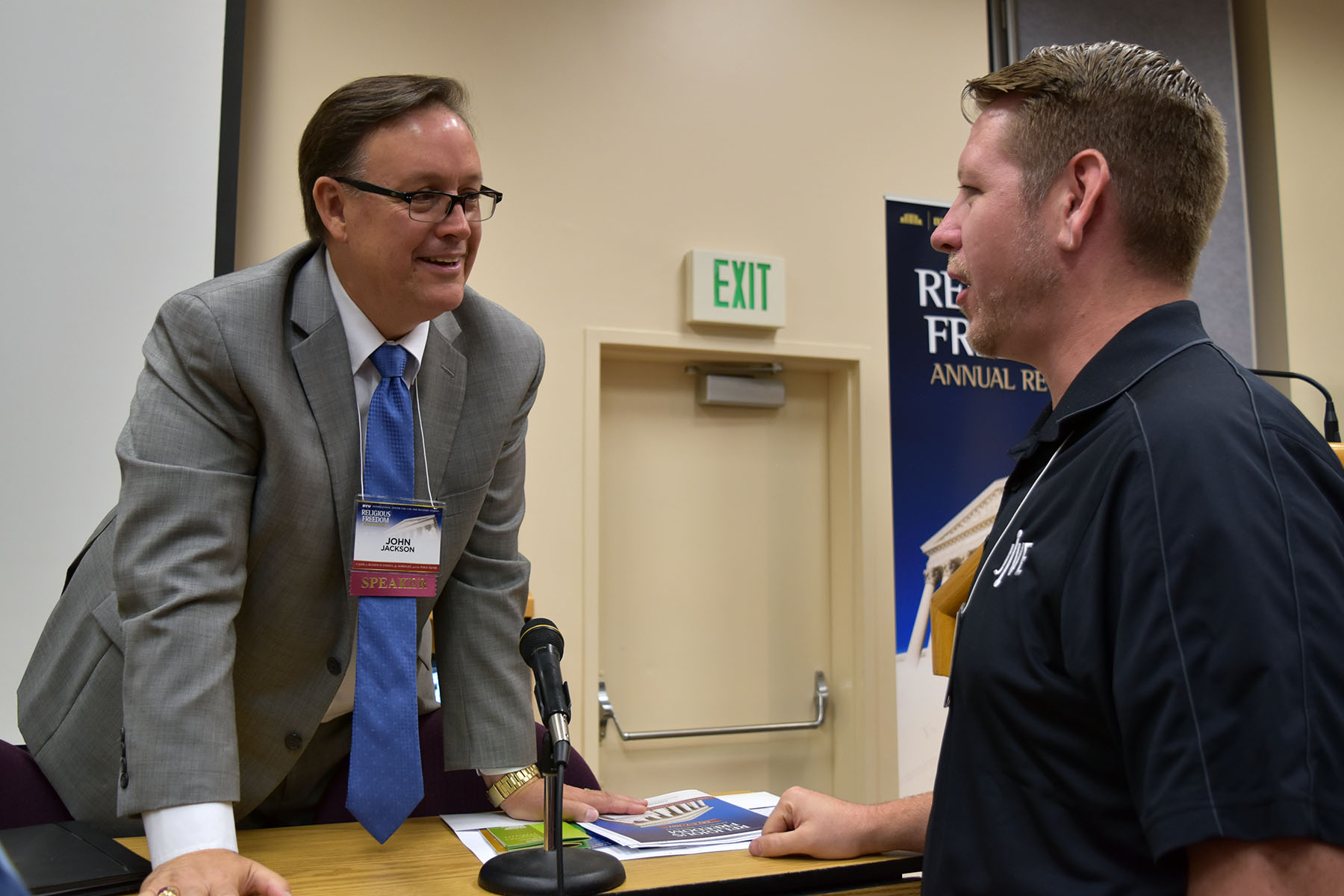General Session: Preserving Religious Diversity in Higher Education – Jackson, Reilly, LoMaglio, & Sandberg

by Scott Mosley, 2017 ICLRS Student Fellow
In the second general session on Friday morning a panel of speakers spoke on the preservation of religious diversity in higher education as described below. The session was moderated by ICLRS Director Brett Scharffs.
John Jackson, President of William Jessup University, began his presentation by quoting John Adams, who stated, “We have no government armed with power capable of contending with human passions unbridled by morality and religion…Our constitution was made only for a moral and religious people. It is wholly inadequate to the government of any other.” Today, there are many sources of conflict including liberty, religious freedom, and the constitution. Concerning higher education, all but one of the Ivy League schools began as religious schools. While many schools have shifted toward secularization, how can a school choosing to remain religious respond to the ever-changing pluralistic environment caused by changing national cultural values? Ultimately the First, Fourth, and Tenth Amendments will continue to intersect and play a major role in the national conversation regarding religious freedom.
Patrick J. Reilly, founder, president, and CEO of The Cardinal Newman Society, focused on how Catholic schools and colleges can actively protect themselves from lawsuits in an increasingly pluralistic society. The number of Catholic schools has dropped by half in the last 50 years. Those that remain face many issues including finances, threats from the government, and threats from within including lawsuits from students and employees demanding these religious colleges change. This trend of increasing lawsuits is expected to continue. Too often schools will look to the court for relief when faced with a lawsuit without first preparing. The best protection for schools is to institute clear and consistent policies rooted in their religious beliefs before being faced with a lawsuit. First Amendment protections will likely prevail if a school is rooted and clearly sticks to its policies. These policies should affect all aspects of education including but not limited to the use of campus facilities, sports programs, and employment requirements. Most schools are unprepared, and what is now a trickle will soon become a downpour. The best protection for these schools can be found by strengthening, not compromising, their religious beliefs.
Shapri D. LoMaglio, Vice-president for Government and Executive Programs, leads the Council for Christian Colleges and Universities’ response to legislative, legal, and regulatory matters on behalf of its 180 institutions of Christ-centered higher education. Her presentation focused on the fact that ultimately, law follows culture, and that to protect religious freedom we need to free religious liberties from cultural wars. If we cannot do this, we will be unsuccessful in protecting religious freedom in the long run. Traditionally circular reasoning has been used to argue for the protections of religious freedoms. We should protect religious freedom because the First Amendment says so. And the First Amendment says so because religious freedom matters. This reasoning is unsatisfactory for those who are not religious. The moral foundations theory put forward by Johnathon Haidt in his book “The Righteous Mind: Why Good People are Divided by Politics and Religion,” can help free us from this circular reasoning. We must learn to speak about religious freedom in ways that everyone can understand, or according to the values held by those we are talking to. One example is the Utah Compromise or fairness for all, which couched religious freedom under the value of fairness. Once we can do this we will see greater success in protecting religious freedom.
Steven M. Sandberg, Deputy General Counsel for Brigham Young University, made “a call for courage.” Pointing out that ultimately religion comes down to a personal conviction, there are three basic principles that will serve religious freedom in the long run. We must 1) have courage to take a stand, 2) work at it (no religious tradition has doing nothing as a tenant of its theology), and 3) connect human being to human being, including those who are likeminded and those who are opposed to our own personal views and convictions. Connections create room for the concept of institutions. The right to gather becomes an integral right to social justice. Thus, by connecting with others we can show how religious institutions can be at heart simply a group of individuals with similar convictions. When we come to know each other as human beings who we love and respect we create an opportunity for people with no personal stake in the protection of religious freedom to become our advocates.